A Very Large Pasta Strainer
Following issues back in early May, with the pump sucking the false bottom because not enough wort was flowing through the grain, I thought I'd make something with a very large sieving surface.
My idea was to attach a cylinder of perforated stainless to an existing stainless thing, like this handle-less colander from Maroo in Alperton:I'm fantasizing about a sort of mega-colander for the future.
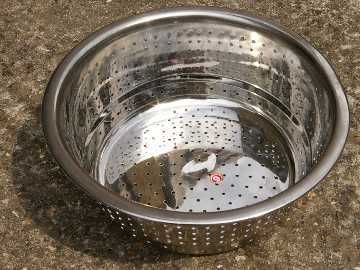
which I think cost me £3.50. I was in the shop, thinking as usual about what items might be useful for home brewing, and it called out to me, saying "Phone home, and get the maker of TC to go and measure the inside of your Electrim boiler!"
I saw various posts recommending Mr David Woodland, who sells perforated stainless sheet on EBay as topsecretjob. He cut me a piece of perf s/s 820mm x 240mm, entirely perforated to the edges, for £25 including P&P. I first emailed about sizes on the 8th of May and it arrived on the 14th, which is fantastic.
How to bend it without getting lumps and creases? Two work colleagues make large model steam locos as a hobby (5 1/4" and 7" gauge), and one of them lent me a bending roll, which he uses to roll-up sheet copper into model train boilers:
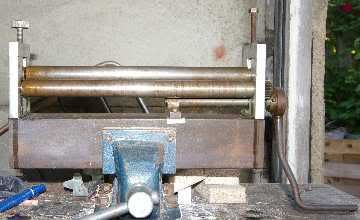
There are two geared rollers at the bottom, and an adjustable one on top, and you mangle your sheet metal between them, tightening-up the adjustable roller as you go, so as to decrease the diameter of the cylinder.
Just starting:
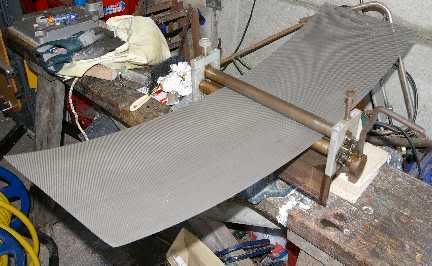
After about four passes, tightening a bit each time:
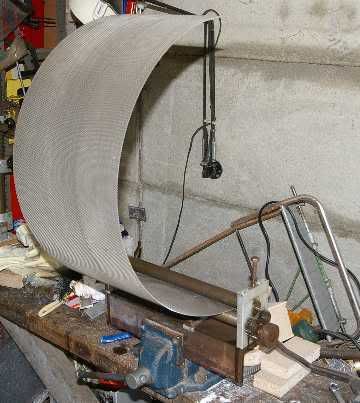
and after about ten passes:
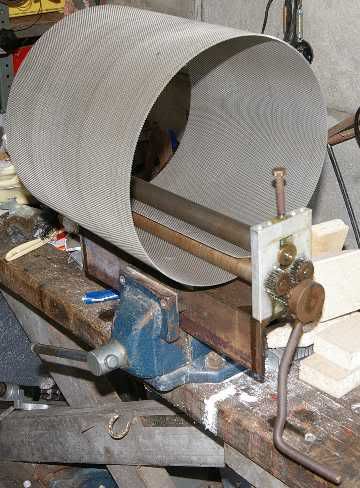
Now to MIG-weld the edges together (warning for the squeamish: my welding is not pretty)
To hold the edges together, temporarily, I stapled them into pieces of scrap wood:
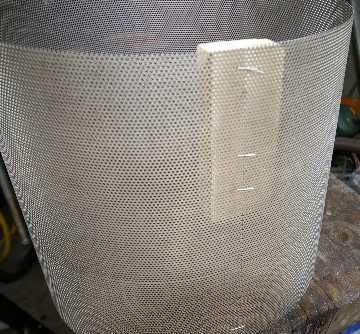
Here is the weld (you can see the s/s looking rusty because it was heated):
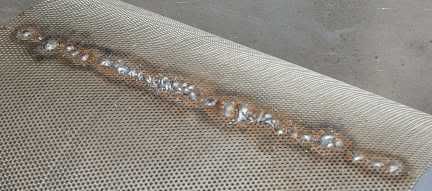
and here it is after I wire-brushed it with the angle grinder:

Now to attach the colander. The stainless cylinder was just about the right size to sit on the rim of the colander but the cylinder kept deforming and the colander fell through, so I made a number of wire loops for it to sit on, on the third row of holes:
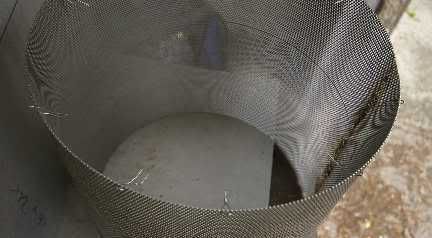
I welded round the outside and the inside, so I got this:

then I cut three legs out of 8mm s/s rod to keep the whole lot off the element in the Electrim boiler:
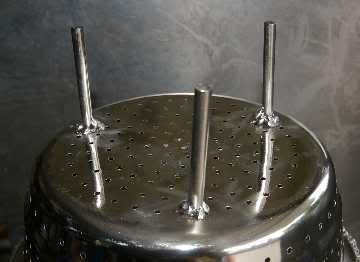
Nearly there:
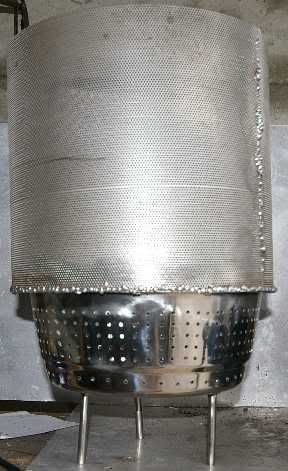
At this point I boiled the pasta strainer in fairly strong washing soda to get rid of the greasy stuff on the perf s/s, and everywhere that had been hot, owing to welding, now looked rusty. I suppose that's because the chromium/iron parts of the s/s alloy migrate around as you heat them. Somebody near me probably does electro-polishing (all your shiny stuff is electro-polished), but I expect it would cost more than the pasta strainer did in the first place. No picture of it looking even rougher than earlier!
Finally I measured the inside, and bought a 1.5m length of 90cm plain net curtain from Dunelm in South Harrow for about £2.50. (I can't find that exact item on their website.) I can't remember whether it's nylon or polyester, but either will do for above boiling point. The great thing about this stuff is that it already has a casing (the turned-over bit at the top for the curtain wire) which I'm using for my draw-string. Cut to length, sew up the side seam, cut out and sew on a circle about 2cm bigger all round for the bottom, thread some braided nylon cord through the casing, and there we have a grain bag for the pasta strainer:
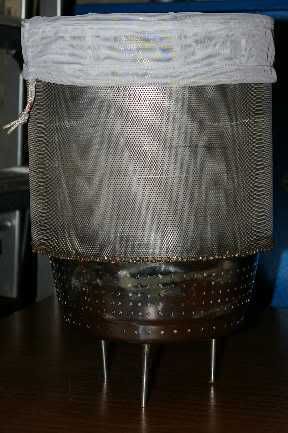
Here it is in the Electrim boiler:

I did think about cutting-up another shallower colander so I could make a "safety edge" for the top - a nice rounded rim instead of the sharp-ish stainless edges. Bending rollers meant for this sort of thing have a special groove for feeding-in a wire for the safety edge - look at the top of a standard metal waste-paper basket.
After wire-brushing the sharper bits (angle-grinder again) I slit along a length of silicone tube and glued it to the top of the s/s with food-grade silicone sealant. You can just see this underneath the net of the grain bag in the last two pictures.
Pictures of it in use are now posted.

